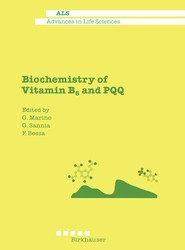(To see other currencies, click on price)
MORE ABOUT THIS BOOK
Main description:
At present, we do not fully understand at what stage of the evolution of living matter the first traces of defense reactions occurred. We even do not fully understand how and why immune systems reached their contem porary state in advanced vertebrates and man. It may be expected that in the near future these questions will be answered by comparative and develop mental biology. Together with an extraordinary explosion of our knowledge about immunity of mammals including man, an increase in the interests concerning origin and development of immune mechanisms at lower stages of the phylogeny can be observed. The search for simple types of immune mechanisms in less complex but still evolutionary successful animals is promising and may contribute to better understanding of highly complex immune adaptive responses in mammals. It is important to note that comparative and evolutionary immunology differs greatly from other branches of biomedical science. Apart from immunology and molecular biology, a specialist in this discipline has to be familiar with every detail of taxonomy, comparative anatomy, physiology, embryology, and even with the phyletic relationships of animals. Probably no monography could deal with the entire animal kingdom, because, in many cases, the insights into questions about immune mecha nisms of many animal groupings or phyla, and their possible evolutionary implications, are unknown or just now beginning to take shape. For the moment, our knowledge on such matters relies upon reconstructions of ideas that we have deduced from studies on members of relative taxa.
Contents:
References.- Animals at the cell-aggregate body organization.- Porifera.- Humoral immunity.- Cellular immunity.- Conclusions.- References.- Diblastic animals.- Coelenterata.- Humoral immunity.- Cellular immunity.- The immune phenomena characteristics.- Conclusions.- References.- Protostomes.- Annelida.- The evolutionary significance of metamery and the coelom.- The cells.- The origin.- Humoral immunity.- Adaptive humoral immunity.- Cellular immunity.- Phagocytosis.- Cytotoxic reactions.- Transplantation reaction.- Adaptive cellular defense reactions.- Conclusions.- References.- Arthropoda.- References.- Chelicerata.- The cells and structures engaged in the immune reactions.- Humoral immunity.- Cellular immunity.- References.- Crustacea.- Hemopoitic structures.- Humoral immunity.- Cellular immunity.- References.- Insecta.- Blood cells.- Hemopoietic structures and their possible relevance to immunity.- Humoral immunity.- Inducible antibacterial peptides.- Cellular immunology.- Phagocytosis.- Encapsulation.- Transplantation immunity.- References.- Mollusca.- The hemopoietic tissues and organs.- The gastropods.- The bivalves.- The cephalopods.- Humoral immunity.- Cellular immunity.- Conclusions.- References.- Deuterostomes.- Echinodermata.- The coelomic derivatives of echinoderms and their possible role in immunity.- The immune significance of coelomic tubular and perivisceral systems.- The water vascular, hemal and perihemal systems.- Perivisceral coelom.- Other structures engaged in the immunity.- Humoral immunity.- Cellular immunity.- Regeneration.- Conclusions.- References.- Chordates/Urochordata.- The anatomical features of ascidians in regard to their possible immune significance.- The immune significance of the pharyngeal region.- Other structures engaged in the immunity.- The lymph nodules.- Body wall.- The neural gland.- Humoral immunity.- Cellular immunity.- Conclusions.- References.- Chordates/Vertebrates/Agnatha.- Origin.- The immunocompetent tissues and organs.- The possible thymus equivalent lymphoid structures of pharyngeal region.- The gut-associated lymphoid structures considered to be equivalent to the spleen.- Lymphoid tissues with the poietic capability supposed to be equivalent to bone marrow.- Other lymphohemopoietic tissues.- Humoral immunity.- Specific humoral immunity.- Cellular immunity.- References.- Chordates/Vertebrates/Chondrichthyes.- Origins.- The immunocompetent tissues and organs of chondrichthyans.- The thymus.- The spleen.- The gut-associated lymphoid tissue.- The immunocompetent tissues and organs of chondrichthyans comparable to the bone marrow.- The Leydig's organ.- Epigonal organs.- The lymphomyeloid structures of cranial region.- The kidney.- Development of lymphohemopoiesis in elasmobranchs.- Humoral immunity.- Specific humoral immunity.- Cellular immunity.- Specific cellular immunity.- Conclusions.- References.- Chordates/Vertebrates /Osteichthyes.- Origins.- The immunocompetent tissues and organs of osteichthyans.- The thymus.- The spleen.- The gut-associated lymphoid tissue.- The immunocompetent tissues and organs of osteichthyans comparable to the bone marrow.- The kidney.- Other structures.- Cells.- B Lymphocytes.- T Lymphocytes.- MHC Antigens.- Nonspecific humoral immunity.- Specific humoral immunity.- Nonspecific cellular immunity.- Cytokines.- Transplantation.- Cytotoxicity.- Cellular cooperation.- Conclusions.- References.- General conclusions.- References.
PRODUCT DETAILS
Publisher: Springer (Birkhauser Verlag AG)
Publication date: October, 2012
Pages: 196
Weight: 382g
Availability: Available
Subcategories: Immunology
From the same series






